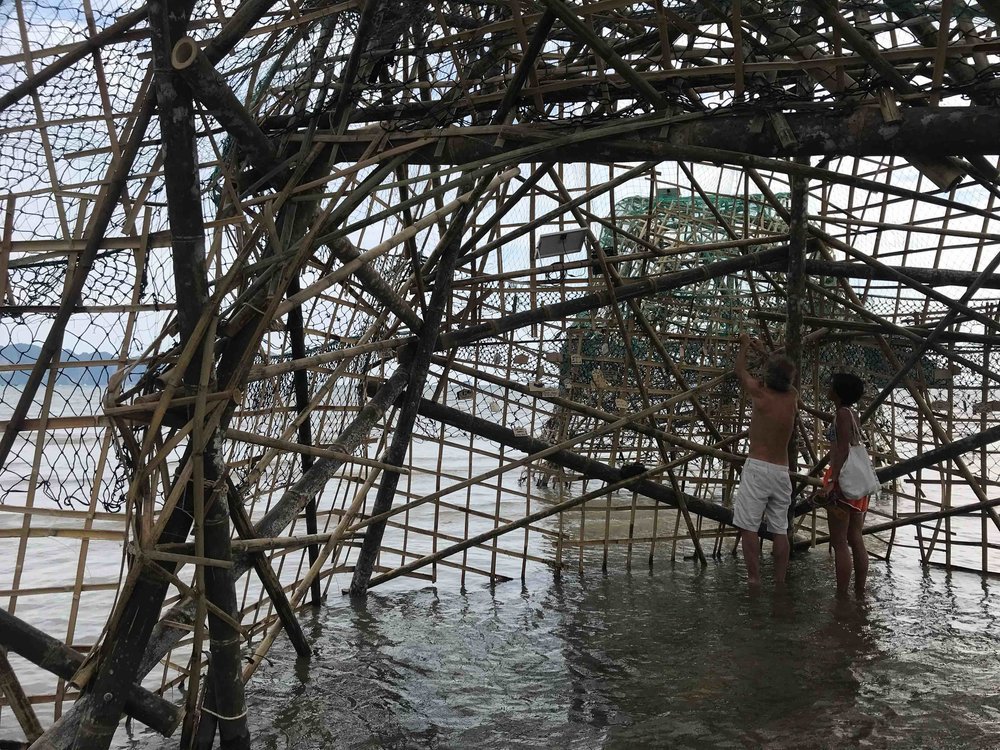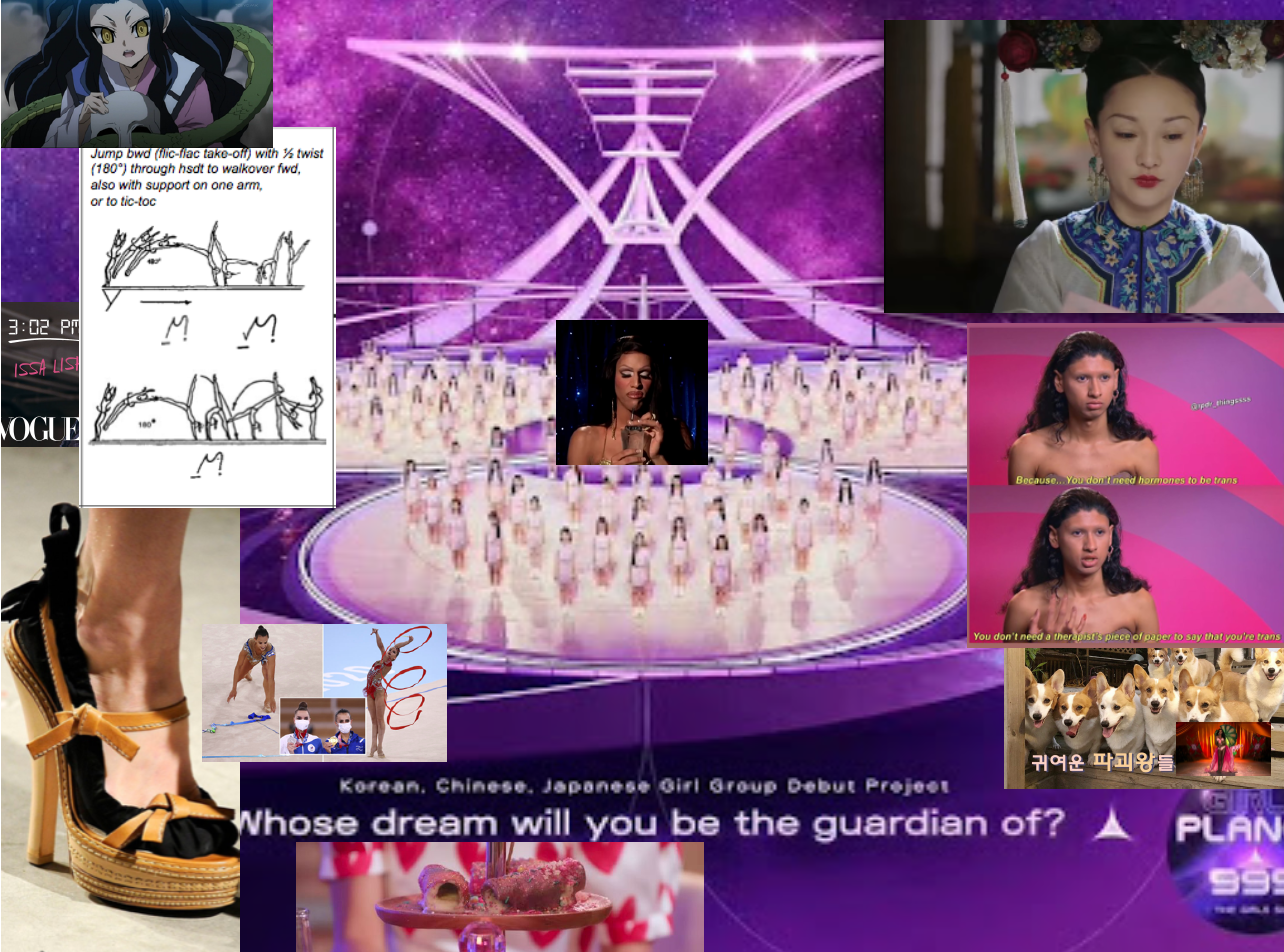Conversation with Vipash Purichanont
What can an exhibition do
By Ian Tee
Vipash Purichanont. Image courtesy of Singapore Art Museum.
Vipash Purichanont is an independent curator and lecturer at the department of Art History at Silpakorn University, Bangkok. His curatorial projects include 'Kamin Lertchaipraset: 31st Century Museum of Contemporary Spirit' (Chicago, 2011), the first Thailand Biennale (Krabi, 2018), and 'Concept. Context. Contestation.' (Bangkok, Yogjakarta, Hanoi, Yangon, 2013-2019). He is currently part of the curatorial team for the 2019 Singapore Biennale.
We speak to Vipash to find out more about his research interests and the negotiations involved in exhibition-making.
A rehearsal of Apichatpong Weerasethakul's excerpt from 'Fever Room' for 'METAPHORS: AN EVENING OF SOUND AND MOVING IMAGE WITH KICK THE MACHINE' at BangkokCityCity gallery.
Since returning to Thailand from London, you co-founded ‘Waiting You Curator Lab’. Can you tell us more about the platform and its aims?
Kittima Chareeprasit and I co-founded Waiting You Curator Lab in 2016, and it is based in Chiang Mai. In fact, we have been working together since our student days in London. She was doing an MA in Curating and Collections at Chelsea College of Arts, while I was at Goldsmiths. Kittima returned to Thailand first and began teaching at Chiang Mai University. We saw similar problems: that while there are more curators today, there isn't space for experimentation and a common ground for people to come together and discuss. We wanted to create a lab where we can test things out.
Currently, we are trying out different platforms without a physical space. 'Waiting You Curator Lab' used to have a room which housed our office, but now projects tend to be pop-up events organised in collaboration with various institutions such as commercial galleries and museums. We have also printed a series of publications.
One of the programmes was a talk you gave titled 'Language of Collections: Mediation in Curatorial Practice' at the 2017 Museum Academy Workshop organised by Museum Siam, Bangkok. What did you speak about?
That talk was based on my research and a course I teach on art museums and galleries. What I was interested in was the idea of collections, and secondly, that the objects in a collection might not always have its own voice. This idea comes from Walter Benjamin's short essay titled “On Language as Such and on Language of Man” (1916), which emerged again in the contemporary art circle recently.
The workshop focused on theories that shift the attention from thinking about objects to trying to find ways that allow objects to speak. The difference comes from shifting the subject position of the curator, from the person who interprets the world to someone who listens. We also spent a day exploring Montien Boonma's works and archive at Montien Atelier, where students created exhibition proposals.
A member of the public participates in 'Ghost Island' by Map Office by hanging their ema, a Japanese wooden plaque, to pay for an ocean. Image courtesy of Vipash Purichanont.
You were one of the co-curators for the inaugural Thailand Biennale (Krabi, 2018). What was one major challenge and could you share any lessons learnt from this experience?
The premise of the Thailand Biennale is quite interesting to begin with. It sets itself as a biennale which does not repeat in the same city and instead moving from one province to another. This will be a challenge for future editions where the curatorial team would have to research a new location and find its relevance.
For the first edition in Krabi, a unique challenge was its outdoor site-specific nature. We had to consider if the pieces could work in the specific locations in parks, beaches, swamps and waterfalls, while also speaking to environmental issues. One example is 'Ghost Island', a project by Hong-Kong based architect Map Office. They constructed a six-metre tall bamboo structure, covered with ghost fishing nets that the local divers recovered from the ocean. Ghost nets are fishing equipment that are left behind in the sea, and continue to fish on their own. The island makes visible ghost fishing as an autonomous activity which is otherwise invisible to us, terrestrial animals, despite the fact that it derives from our responsibility to the environment.
An installation view of 'Concept. Context. Contestation: Art and the collective in Southeast Asia' at Bangkok Art & Culture Centre in 2013. Image courtesy of Jakarin Tewtao and Bangkok Art & Culture Centre.
You co-curated 'Concept. Context. Contestation: Art and the collective in Southeast Asia' (CCC) alongside Iola Lenzi and Agung Hujatnikajennong. It was a touring exhibition which opened at the Bangkok Art & Culture Centre (BACC) in 2014, before travelling to venues in Hanoi, Jogjakarta, and most recently, Yangon. Could you share any insights or observations gleaned from the organisation process as well as responses across different countries?
It's been six years since the first edition, and the show in Yangon is the last stop for CCC. Due to the BACC's limited funding as well as different challenges, it has been a slow travelling exhibition. What I found interesting was how the art historical discourse moved in the last five years. One example is how interest shifted from historiography and collectivism to speculative fiction and ecological issues. CCC became more like a historical show towards the end even though we were more cutting edge or at least contemporary at the beginning.
As a travelling exhibition, there were different problems we faced in each city, for instance in Hanoi it was censorship issues related to exhibition-making in Vietnam. The last show in Yangon was quite a challenge as the local art scene grew so fast and we wanted to include more young artists from Myanmar. At the same time, the practices of older artists have also changed significantly in this short period. It is very different from six years ago when Myanmar just started to open up.
In the essay titled 'Ghost of Collectivity', you reflected upon the political atmosphere in Bangkok during CCC's exhibition period. The decision by BACC to close the institution a day before the 'Shutdown Bangkok' campaign was a powerful episode for you. Can you share how it affected your practice?
'Ghost of Collectivity' is an essay that came out of a talk I prepared for a symposium 'Imagining New Ecologies 2018'. It will be part of a collection of writings published by the Japan Foundation this year. The essay deals with the lack of a sense of collectivism in society after the coup d'état in Thailand. The question I wanted to address was the ghost of the exhibition. It has to do with the concept of hauntology, the absence of CCC in a place that needed its contribution.
I have been thinking about the lack of a social body in Thailand recently and the voids in imagination for the future. It is important to reflect on what an exhibition can and should do if it was allowed to come into being from its own absence. This is especially so at a time when the social body cannot or would not like to come together in a public place. How can such events and exhibitions matter to the people or the city?
You cited the use of the curator as a modern state apparatus in your writings on the development of curatorial practice in Thailand. What was your experience negotiating these cultural and socio-political forces?
I have to admit that I am still not good at this. Any biennale or big exhibition initiated by governments would be driven or framed by policy, and it needs achieve certain set goals. However, we should realise that we can do much more in the process of exhibition-making at the operational level. Stefano Harney and Fred Moten's book ‘The Undercommons’ speak of such self-organised moments in social life where one negotiates with policy.
We are living in a world where there will be more biennales and not less. I think curators and artists are seeking a model that works for us, perhaps at the same time governments or policy-makers are doing the same. The challenge is to find possibilities of working within a structure where potentiality to think otherwise is limited by goals and objectives.
Kamin Lertchaiprasert and his class vising City Farm in Chicago during the preparation of "31st Century Museum of Contemporary Spirit Laboratory @ Chicago" in 2011. Image courtesy of Vipash Purichanont.
Your interest in Buddhist philosophy seems to connect to this point. I am thinking about the show you curated in 2011 'Kamin Lertchaiprasert: 31'st Century Museum of Contemporary Spirit' at the Sullivan Galleries, School of Art Institute of Chicago, as well as your thesis in which you made a proposition around Zen ideas. Both projects deal with questions of the self and technologies of the self. How can these ideas be communicated?
What I have found in Buddhist philosophy is the dedication to practice, that manifests not only in the religion but also Asian aesthetics and asceticism. For instance, how monks and masters of art practise, and the ways in which repetition change the individual. I have to admit this interest also came out of the collaboration I had with Kamin Lertchaiprasert 10 years ago. He is an artist dealing with meditation and Theravada Buddhism, and what he showed me was the dedication in the process rather than the outcome.
The first thing I learnt from teaching is that you cannot force anyone to do anything. The way to make it visible is to bring this aspect of life into the experience. One model is to think of the art exhibition as a retreat instead of a display of end products. Exhibition-making can be an opportunity to come together and share our technologies of the self. This sentiment is partly influenced by my time as a teaching assistant in Chicago working with the Sullivan Galleries. It is a teaching gallery where students are engaged in the exhibition-making process as well as in activating the space. The students’ successes were evaluated based on the experience that they had gained in the making, not how their exhibitions performed.
What projects can we look forward to seeing from you in 2019?
I am curating a solo show of Thai artist Tawatchai Puntusawasdi which opens at A+ Works of Art in Kuala Lumpur in March. He has a piece at the ArtScience Museum as part of the ‘Minimalism’ exhibition, and was also included in the 2018 Sydney Biennale. In the forthcoming solo exhibition, we will be showing his drafts on paper, metal sheets as well as prototypes models rather than his large sculptures. The focus is on unpacking his practice and trying to understand it through these sketches.
For the Singapore Biennale, my interpretation of the theme 'Every Step to the Right Direction' is to think of verticality as directionality. I am exploring practices of artists who are interested in the movement of people away from the plain and the agrarian societies that are the basis of city-states in mainland Southeast Asia. Currently, I am calling the project 'The Paths of Not Being Governed' as a tribute to a book by James C. Scott, an American political scientist and anthropologist, that inspired this project. We shall see how it plays out in Singapore Biennale at the end of this year.


















